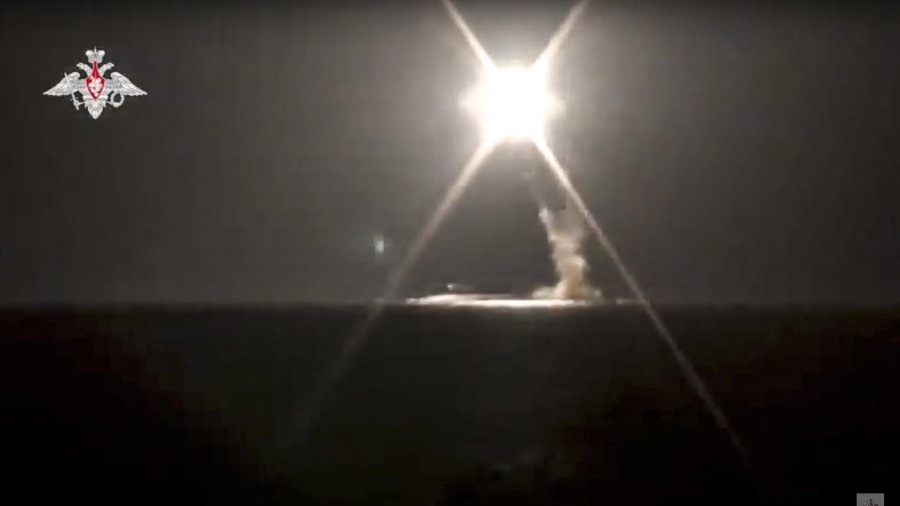The Russian military test-fired about one dozen new Tsirkon hypersonic cruise missiles from warships last week, according to reports, citing the northern fleet.
Interfax news agency reported on Friday that Moscow test-fired around 10 of the new hypersonic weapon systems from a frigate and two more from a submarine.
Russian President Vladimir Putin has lauded the weapon as part of a new generation of unrivaled arms systems.
Last week, Putin said during a joint meeting of the State Council and the Council for Science and Education that it successfully test-fired the missiles on Dec. 24, but no immediate details were provided on the event.

“The Tsirkon hypersonic system was salvo-launched,” the Russian leader said, news agency TASS reported. “This is our advanced missile that can hit both seaborne and ground targets.”
“The tests were successful and smooth,” he added. “This is a big event in the country’s life and a considerable step towards enhancing Russia’s security and its defense capability.”
Russia’s latest test of the advanced weapon system comes just months after it announced that it has successfully test-fired a Tsirkon hypersonic cruise missile from a nuclear-powered submarine for the first time.
Low-quality video footage made public by the Russian Defense Ministry at the time showed a missile being launched upward from the submarine at nighttime.
Tsirkon is capable of flying at more than five times the speed of sound and the missile has a range of 620 miles (1,000 kilometers). This is slower than an intercontinental ballistic missile, but the shape of a hypersonic glide vehicle (HGV) allows it to maneuver toward a target or away from defenses.
Some Western experts have questioned how advanced Russia’s new generation of weapons is while recognizing that the combination of speed, maneuverability, and altitude of hypersonic missiles makes them difficult to track and intercept.
Putin announced an array of new hypersonic weapons in 2018 in one of his most bellicose speeches in years, saying they could hit almost any point in the world and evade a U.S.-built missile shield.
Quite a few countries, including North Korea and China, are reportedly working on hypersonic weapons. North Korea has claimed success with hypersonic weapons. The North Korean missile supposedly possesses the “guiding maneuverability and the gliding flight characteristics” of an HGV.
China has been working on an HGV designated DF-17, and it has been test-launched several times, boosted by a conventional missile. The DF-17 is reportedly capable of flying up to Mach 10 (7,400 mph), possibly nuclear-armed, and could be launched from an ICBM, giving it global coverage.
Reuters contributed to this report.

